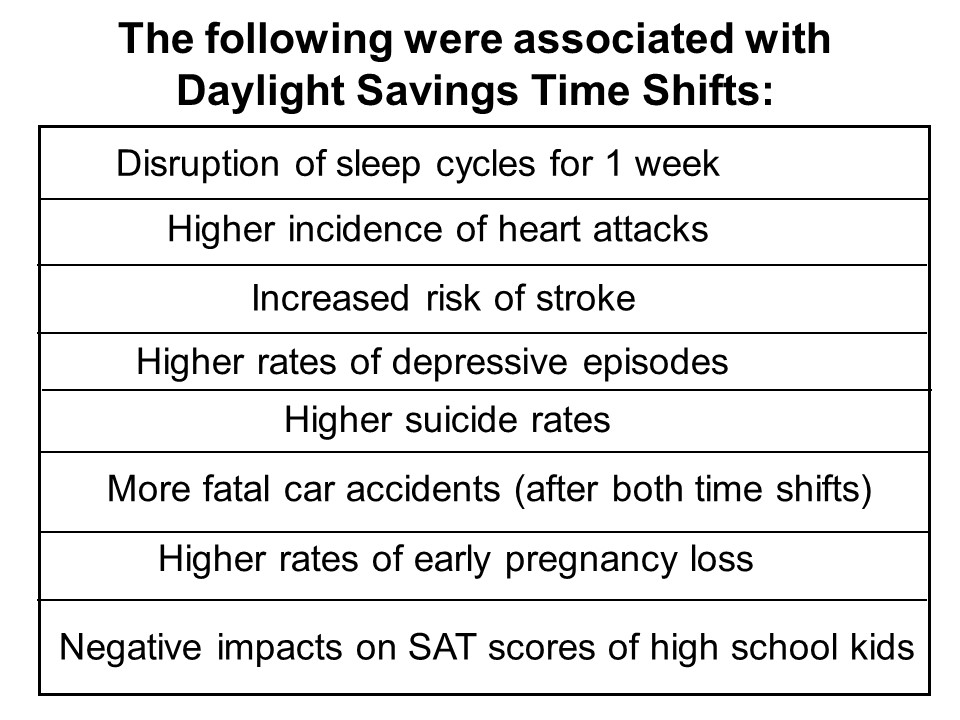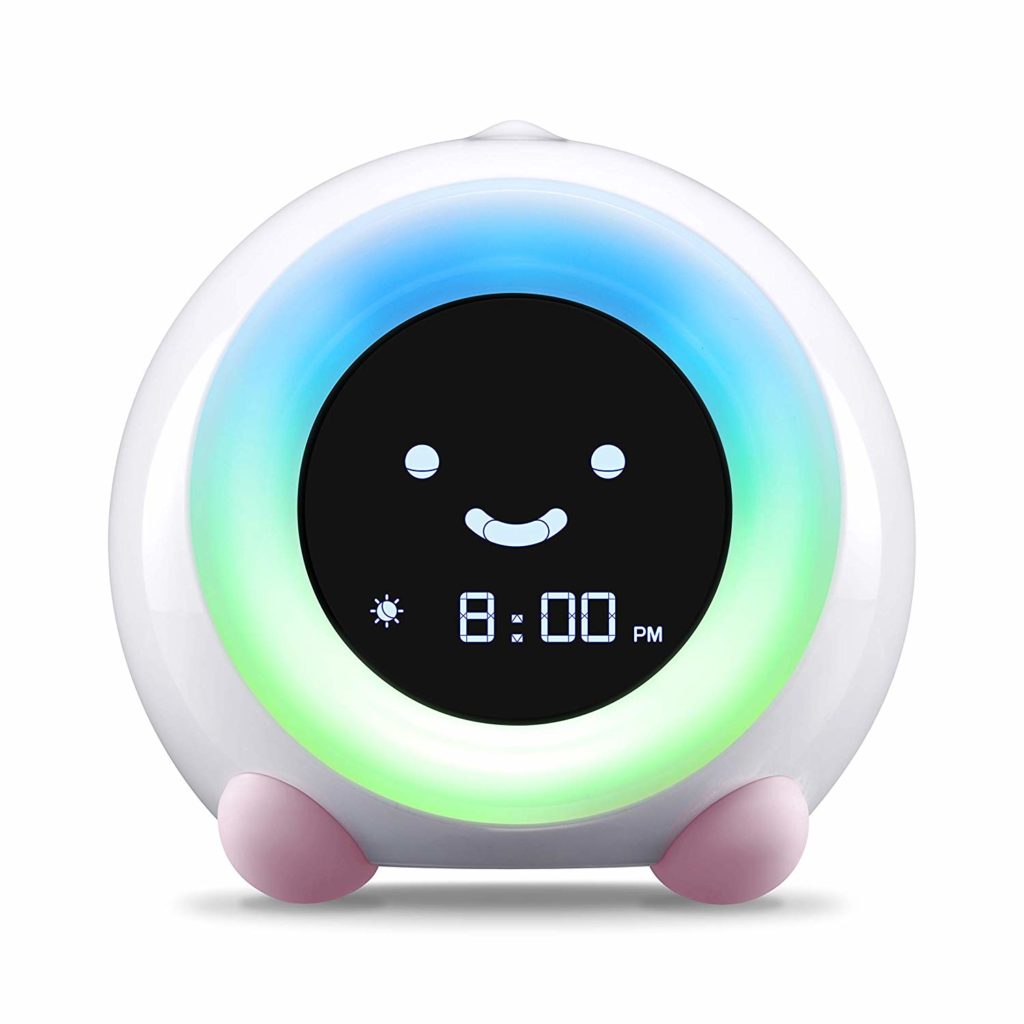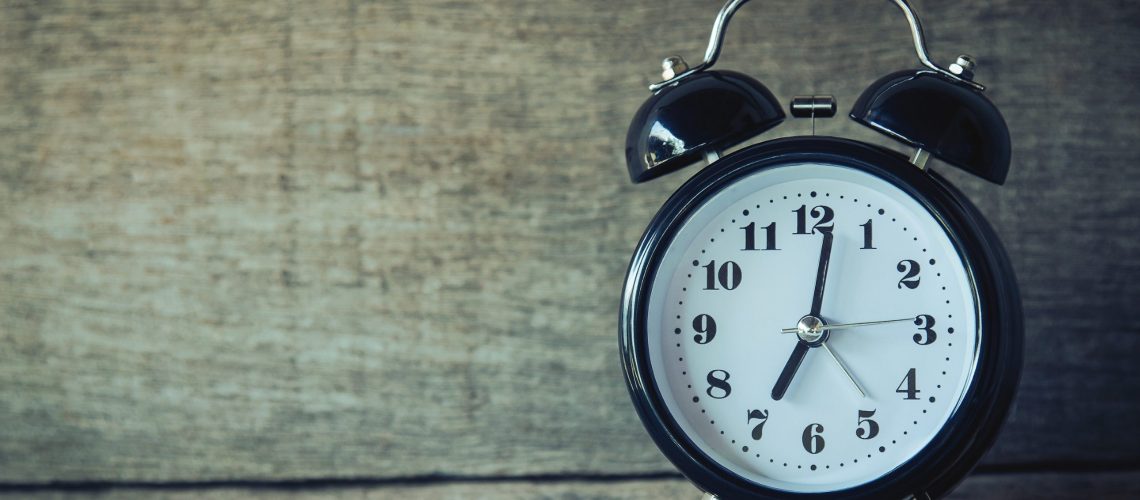This past weekend was Daylight Savings Time, that lovely day when, each year, we arbitrarily decide that the clock is no longer correct, that we were perhaps getting a little too comfortable in our realities, and that we want to make life just a little more chaotic.
Before I had kids, I used to love this time of year. I’d gleefully sing “We get an extra hour of sleep tonight!”, skip around, and probably annoy the heck out of every parent in hearing distance with my plans for that lazy, luxurious, Sunday of sleep.
As parents, we do get an extra hour, but it isn’t an hour filled with sleep. No no, we get an extra hour of cranky kids, and if we’re really lucky, we get that lovely extra hour every day for about the entire next week.
That’s because our kids don’t understand the concept of sleeping in. They wake up when they wake up. If we’re dumb enough to call that time 5:30am rather than 6:30am, well then we get to live with the consequences, because by about an hour before bedtime that night, there’ll surely be hell to pay.
But it’s just one hour! Why is it so hard for our kids to shift?
Our entire lives are timed by rhythms called circadian (a.k.a. daily) rhythms. Our bodies crave these rhythms, because the more predictable our energy expenditure is, the better our bodies can prepare for those energetic challenges we will face. We eat at the times that are most energetically demanding (daytime), and we sleep when that energy runs out. It’s our biology. Here’s what our rhythm usually looks like:

All of the cells within our bodies are timed to this rhythm. Your digestive system functions best when you’re awake, because that’s when you’re most likely to need and digest food. Your immune system is also most active when you’re awake, because that’s when you’re most likely to encounter something it’s supposed to fight. Daylight helps to perfect the rhythms, making it easy for your body to follow them exactly, but your body would continue along that rhythm even if there were 24 hours of darkness, at least for awhile.
When we choose to shift our clocks, we’re asking a lot of our bodies. Before we wake up, our bodies undergo substantial hormonal changes, alerting all of the cells in our bodies that it’s time to wake up. Suddenly, we decide, on a dime, that those physical changes should just shift, with no real reason to do so other than the fact that we decided it. Unfortunately, our bodies don’t really work that way.
But maybe you’re thinking “I don’t have that much trouble!”
As adults, we have some control over our bodies. We can wait to eat even when we’re hungry, or decide to go to the bathroom later, even when we get the urge to go. Likewise, we can consciously override some of our daily rhythms, by telling ourselves to stay awake or to get up earlier.
But kids are really just little biological clocks at this point. They don’t have the power to go against their bodies. We’ve all seen our kids try to stay up late. Even a few minutes past bedtime brings crankiness, then comes the rubbing of the eyes, and finally, you’ve got a kid sprawled wherever he or she happened to crash. And when kids are young, watch out for the demon emergence if dinner is even 5 minutes late!
But wait! Adults don’t really respond well either!
It turns out that shifting the clock has adverse effects on us too. In a study conducted in Europe, people reported decreased ‘life satisfaction’ in the week following their Spring time change (their equivalent to our ‘Fall back’). In other words, the time shift made them grumpy.
Several studies suggest that these time shifts negatively impact mental and physical health in other more serious ways as well.

These effects were all present for about a week following the time change.
So how do we better navigate the shift?
- Prepare for the change in advance by doing 10 minute shifts in daily routines each day. It’s too late to do this for the current shift, of course, but this could help for the next time. For the spring forward, you would just wake up and go to bed 10 minutes earlier each day leading up to the time change. Then you’ll be right on schedule when you turn back those clocks.
- Use light to your advantage. During the week after the fall back, our bodies want to wake up and go to bed an hour earlier than we’re supposed to. To shift more quickly, the goal is to go to bed an hour later. Keep the room bright later at night to delay sleep an hour for the whole family. If you’re dealing with Spring forward, do the opposite. Turn lights down an hour earlier than you normally would.
- Engage your kids with a special night time activity. Again, for fall back season, we’re trying to keep the kids up for an extra hour. But when we keep kids up for even an extra 5 minutes, we tend to suffer the cranky consequences. Keeping the kids engaged for that extra hour, perhaps by getting them excited about an activity that you might not normally do, could help to prevent that crankiness before it starts. We like to do a special movie night in our house. We watch a funny movie that gets the kids engaged, pop some popcorn, and roast some marshmallows. Suddenly, it’s their new bedtime, and they wake up later in the morning.
- Do something active after dinner. As the kids wind down, their body rhythms (heart rate, blood pressure, and finally body temperature) decrease. If you keep the heart rate up, this will delay the body’s ability to fall into sleep. This could be done with something as simple as a family game of Hide and Seek, or even a few jumping jacks. If you have a small baby, perhaps a little after-dinner tummy time will do the trick.
- Make sure that the bedroom is dark in the morning. Light has potent effects on our biological rhythms and in some places, Daylight Savings Time means a lot of light in the early morning. Nothing will wake a kid more quickly than light shining in the window. Cover the windows with light-proof curtains to make sure you’re not battling light along with the time change. This will also help during those summer days when the dark nights seem way too short for kid sleep. Trying to wake them up after Spring forward? Open the curtains and let in the light.
- Try a sleep trainer alarm clock. This helps not only with daylight savings but also with helping to avoid those early morning visits by your kids (you know, the ones where you startle awake to two creepy little eyes staring intently at your sleeping self?). The clock changes colors when the kids are supposed to wake up. If it’s not green yet, they know that they’re supposed to go back to sleep. Sometimes this can prevent them from fully waking up, because they automatically drop back to sleep after they see that the clock isn’t the “wake up” color yet. Check out the one below as a good example:

Note that I’m an Amazon associate and I may stand to make a profit if you purchase this product from the link above.
There’s a lot of debate out there about whether Daylight Savings Time is actually a beneficial practice, and that debate will continue as more studies are done. For now, though, we can do our best to get ourselves, and especially our kids, through the shift each time as quickly as possible, and perhaps commiserate with each other along the way. Share your thoughts and experiences with Daylight Savings Time in the comments selection at the bottom of the page! I wish you all a very short Daylight Savings transition!
Contributing References:
Scheving, L. A. (2000). Biological clocks and the digestive system. Gastroenterology, 119(2), 536-549.
Scheiermann, C., Kunisaki, Y., & Frenette, P. S. (2013). Circadian control of the immune system. Nature Reviews Immunology, 13(3), 190.
Kuehnle, D., & Wunder, C. (2016). Using the life satisfaction approach to value daylight savings time transitions: evidence from Britain and Germany. Journal of Happiness Studies, 17(6), 2293-2323.
Jiddou, M. R., Pica, M., Boura, J., Qu, L., & Franklin, B. A. (2013). Incidence of myocardial infarction with shifts to and from daylight savings time. The American journal of cardiology, 111(5), 631-635.
Varughese, J., & Allen, R. P. (2001). Fatal accidents following changes in daylight savings time: the American experience. Sleep medicine, 2(1), 31-36.
Hansen, B. T., Sønderskov, K. M., Hageman, I., Dinesen, P. T., & Østergaard, S. D. (2017). Daylight savings time transitions and the incidence rate of unipolar depressive episodes. Epidemiology, 28(3), 346-353.
Liu, C., Politch, J. A., Cullerton, E., Go, K., Pang, S., & Kuohung, W. (2017). Impact of daylight savings time on spontaneous pregnancy loss in in vitro fertilization patients. Chronobiology international, 34(5), 571-577.
Sipilä, J. O., Ruuskanen, J. O., Rautava, P., & Kytö, V. (2016). Changes in ischemic stroke occurrence following daylight saving time transitions. Sleep medicine, 27, 20-24.
Kantermann, T., Juda, M., Merrow, M., & Roenneberg, T. (2007). The human circadian clock’s seasonal adjustment is disrupted by daylight saving time. Current Biology, 17(22), 1996-2000.









